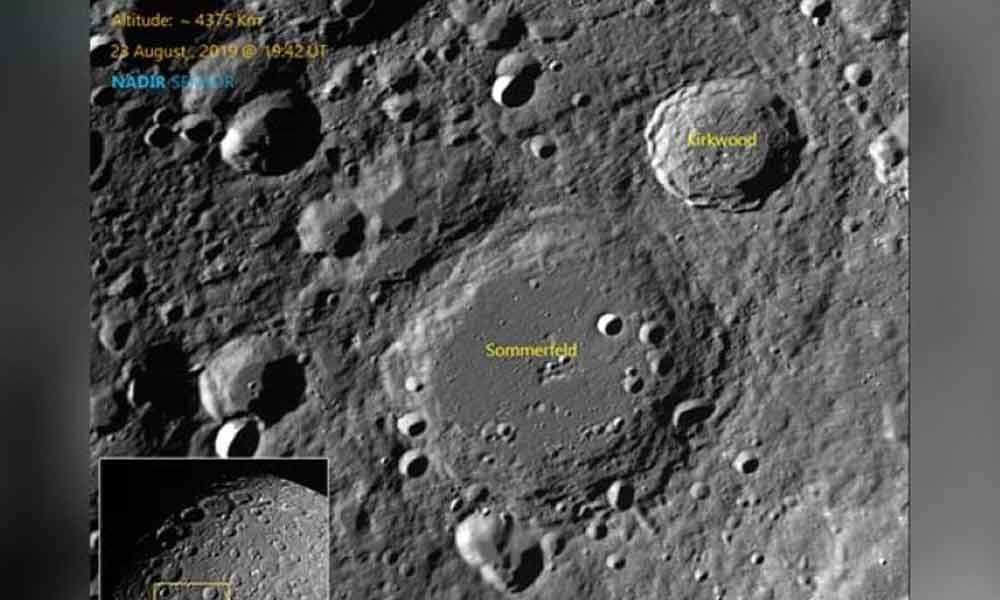ISRO releases fresh set of photos of moon craters

The Indian Space Research Organisation on Monday released a fresh set of photographs of the surface of the moon and its craters taken by the Terrain Mapping Camera-2 of the Chandrayaan-2 spacecraft.
Chennai, Aug 26: The Indian Space Research Organisation on Monday released a fresh set of photographs of the surface of the moon and its craters taken by the Terrain Mapping Camera-2 of the Chandrayaan-2 spacecraft.
According to ISRO, the pictures were taken on August 23 at an altitude of about 4,375 kms showing impact craters like Jackson, Mitra, Mach and Korolev.
ISRO said Jackson is an impact crater located in the northern hemisphere of the far side of the Moon. The crater's diameter is 71 kms.
The interesting feature at the western outer rim of the Mach crater is another impact crater named Mitra (92 kms in diameter).
"It is named after Prof. Sisir Kumar Mitra, who was an Indian physicist and Padma Bhushan recipient known for his pioneering work in the field of ionosphere and radiophysics," ISRO said.
The Korolev crater seen in the image is a 437-km wide crater which has several small craters of varying sizes.
ISRO also released pictures showing impact craters such as Sommerfeld and Kirkwood.
Sommerfeld is a large impact crater located in the farside northern latitudes of the Moon. It is a 169 kms in diameter.
It has a relatively flat interior surrounded by a ring mountain and a number of smaller craters lie along the rim edge.
The crater is named after Dr. Arnold Sommerfeld, a pioneering German physicist in the field of atomic and quantum physics. North east of this crater lies the Kirkwood crater named after American astronomer Daniel Kirkwood, another well-formed impact crater which is approximately 68 kms in diameter, ISRO said.
Another picture was that of impact craters Plaskett (109 kms wide), Rozhdestvenskiy (177 kms wide) and Hermite (104 kms wide, one of the coldest spots in the solar system).




















